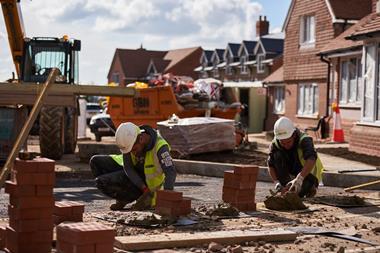Concerns over immigration were a driving factor behind the Brexit vote in 2016. And, it seems, EU-born workers’ worries over their employment rights after the UKs withdrawal from the EU are now being reflected in migration patterns – with new figures published last week by the Office of National Statistics (ONS) showing that EU net migration has hit a six year low as more European citizens are leaving the UK and fewer are coming to work here following the Leave vote.

Concerns over immigration were a driving factor behind the Brexit vote in 2016. And, it seems, EU-born workers’ worries over their employment rights after the UKs withdrawal from the EU are now being reflected in migration patterns – with new figures published last week by the Office of National Statistics (ONS) showing that EU net migration has hit a six year low as more European citizens are leaving the UK and fewer are coming to work here following the Leave vote.
This reduction is significant and potentially damaging for the property sector. Developers and housebuilders rely on skilled migrant labour to cover their domestic shortfalls – and if these net numbers continue to fall it could well impact the government’s ambition to build 300,000 homes a year by the mid-2020s.
There’s already a significant housing shortfall in the UK. In England this backlog stands at close to four million homes, meaning 340,000 new homes – significantly more than the government’s target – need to be built each year until 2031 to meet demand, according to recent research by Heriot Watt University. That means we need a strong and sustainable workforce to build more homes.
The problem is that the domestic UK workforce is facing a crunch point, with as many as 20 per cent of the labour force on the cusp of retirement. A workforce census carried out by the ONS in 2011 estimated that one in every five UK-born construction workers were aged over 55, meaning that by 2021 – around the time of Britain potentially losing thousands of skilled EU workers after the transition period ends – those people will nearly have reached retirement age.

And the number of new, young apprentices coming into the sector is falling short of plugging this gap – with figures, from the Construction Industry Training Board, suggesting UK developers will need 31,600 workers per year between 2018 and 2022.
For several years, and especially since the last recession, skilled EU labour has been meeting this shortfall. The latest official figures show that non-UK nationals accounted for 8% (80,000) of all workers in the UK’s specialised construction activities sub-sector and 7% (25,000) of all workers in the UK’s civil engineering sub-sector. In London, where housing shortages are most acute, this is particularly telling – with EU workers in the capital accounting for more than a quarter of the ‘construction of buildings’ workforce.
Perfect storm
We have, then, a perfect storm – as one set of workers leaves the industry for age reasons, another set may be prevented from entering the UK under the government’s tough migration policy.
Indeed, a survey of more than 400 housebuilders, undertaken for McBains this month, shows the concerns of the construction industry. Asked what the biggest issues were affecting the amount of homes they could build, 47% of respondents cited skills shortages.
Recent findings by the Greater London Authority indicate that across the whole of Greater London, the construction occupations facing the greatest skills shortage are all on-site trades – namely plant mechanics, scaffolders and bricklayers. According to their calculations, demand in all three occupational areas in 2017 exceeded 300 per cent of 2015 employment levels.
The International Monetary Fund (IMF) has argued that Britain risks being overwhelmed by its ageing population and that it actually should be opening its borders to skilled workers in response. A midway solution, that could alleviate some of the pressures, would be for the government to introduce short-term temporary visas, enabling EU migrants to work in trades currently experiencing shortages such as bricklaying and plumbing.
Skills shortages already mean the cost of building is high. If Brexit continues to deter skilled EU workers from coming to the UK, we could see labour costs rising significantly more – and the chances of us building the number of homes needed to meet demand severely diminish too.
































No comments yet